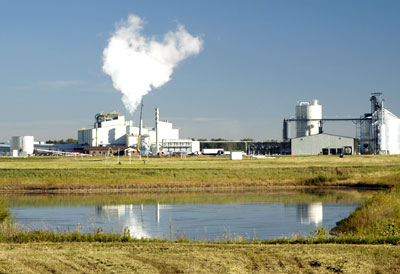Water Quality in the Ethanol Industry
Managing water quality issues for an ethanol facility is a complex task. The supply water is typically ground water from wells located on site or wells from a municipal supply. The level of pollutants in the wastewater is dependent on the quality of supply water, the number of cycles the water is recycled in the process, the chemical additives used, and to the classification of receiving water to which the wastewater is discharged. The wastewater is typically discharged to a ditch or river. Since ethanol facilities are typically located in agricultural areas, most are not connected to municipal wastewater treatment plants (WWTP) and must have their own treatment processes.
The following pollutants are typical parameters of concern from an ethanol facility discharging wastewater in Minnesota. They are listed by the relative challenge they present the plant in controlling their discharge, from most challenging to least.
- Total Dissolved Solids (TDS)
- Total Phosphorus (TP)
- Residual Chlorine
- 5-Day Carbonaceous Biological Oxygen Demand (CBOD5)
- Total Suspended Solids (TSS)
Best Practices for Ethanol Facilities
The following best practices are just a sampling of water quality improvements that can be made in ethanol facilities. To view the complete list of 12 practices, see the MnTAP fact sheet, Best practices for dry mill ethanol plants: water quality and efficiency, or the MnTAP report, Ethanol Benchmarking and Best Practices (2008) [PDF 445KB].
On-site retention of stormwater
A stormwater pond allows the facility some flexibility in controlling stormwater runoff. The pond should keep stormwater discharge levels at least equal to the levels before the site was constructed; allow for sediment removal before the water flows off site; and provide a way to treat dissolved organics and nutrients in stormwater runoff such as nitrogen or phosphorus.
Zero liquid discharge technology
Using appropriate equipment, a facility can treat the plant’s non-contact utility water so there is no water discharge. One significant result of having zero liquid discharge technology is that the facility does not have a utility wastewater discharge liability with the associated monitoring and limits.
Use of low- or no- phosphorus water treatment chemicals
Alternatives such as low or no-phosphorus treatment chemicals are available at this time but they have not been tested in a full scale operating plant. There are concerns that these new chemicals will require more knowledgeable plant operators and tighter controls on the water chemistry system.
